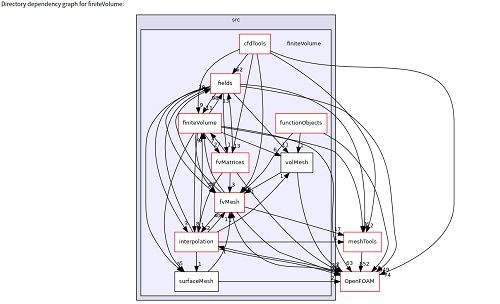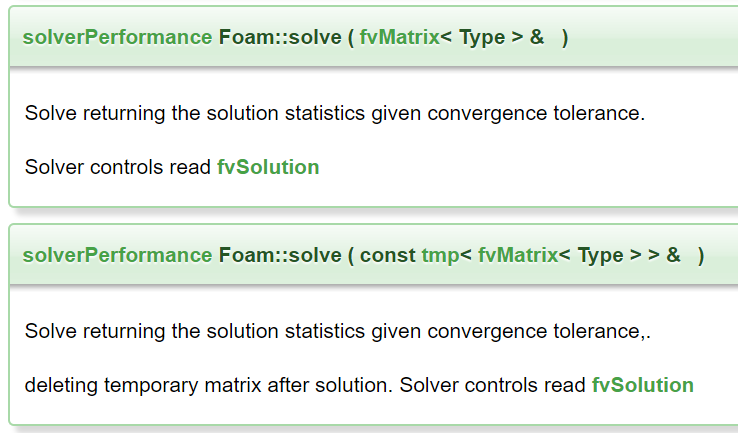

OPENFOAM DOXYGEN INSTALL
If not, use command `sudo apt-get install g++` to install the compiler. Use command `whereis g++` to check if g++ is installed or not. Ubuntu on WSL (Windows Sub-system for Linux) uses g++ to compile C++ codes. Some codes from this repository has also been included in later section of this page. UnnamedMoose/ BasicOpenFOAMProgrammingTutorials provides a good starting point for those looking to develop apps in OpenFOAM. The Java Virtual Machine and Python interpretor are written in C++ C++ has backward compatibility to C, that is the programs written in C can be compiled in C++ environment without any modification. An interpreted language such as Python may also be object-oriented but error checking is done during run-time and no compilation is required. C++ is a statically typed, compiled, case-sensitive, free-form programming language that supports procedural, object-oriented programming. (mu + lambda) * gradU + lambda * tr(gradU)*Iįvm::ddt(T) + fvm::div(phi,T) - fvm::laplacian(DT,T) // = 0Ĭan you write a solver which supercedes all those defined separately for single phase incompressible flows?Ī short and detailed presentation on C++ programming methods and its implementation in OpenFOAM can be found here.Ĭ++ is a strongly type language: checks for types of all data and functions and gives compiler errors if they do not fit. Rho * fvm::d2dt2(U) = fvm::laplacian(2*mu + lambda, U) This equation can be solved in OpenFOAM by: OpenFOAM can be used to solve equations governed by theory of elasticity (solid mechanics) as well. T = e/Cv Density-based compressible flow solver solve ( SuSp(phi, A): Implicit/Explicit source term in equation, depending on sign of phi. Su:Implicit evaluation of the source term in the equation. Nut*magSqr(symm(fvc)::grad(U)) - fvm::Sp(epsilon/k, k) Similarly, the statement to solve k-equation in OpenFOAM is given byįvm::ddt(k) + fvm::div(phi, k) - fvm::laplacian(nu() + nut, k) = Solve (fvm::ddt(phi) = kappa*0.5*(fvm::laplacian(phi) + fvc::laplacian(phi))) The Crank Nicholson scheme can be implemented by the average of implicit and explicit terms: Solve(fvm::ddt(phi) = kappa*fvc::laplacian(phi)) Solve(fvm::ddt(phi) = kappa*fvm::laplacian(phi))Īn explicit implementation would read where the fvc class to discretise the Laplacian term explicitly. To solve the transient diffusion equation: ∂φ/∂t = κ∇ 2φ, an Euler implicit implementation of this would read as follows where fvm class to discretise the Laplacian term implicitly.:
OPENFOAM DOXYGEN CODE
The code to solve Navier-Stokes equation described below is written for demonstration of fvm and fvc class. Similarly, & denotes dot product of two vectors in OpenFOAM. The parentheses ( - ) means a product of the enclosed quantities, including tensor products. fvm (Finite Volume Method) returns a matrix, fvc (Finite Volume Calculus) refers the field variables. On the other hand, fvc::grad means an explicit finite volume discretization for the gradient operator.

Here fvm::laplacian means an implicit finite volume discretization for the Laplacian operator, and similarly for fvm::div for the divergence operator. OpenFOAM code for the N-S equation: Note that the specifications fvm and fvc are selected by the user from the fvSchemes dictionary in the system dictionary. The shared object library can be dynamically linked to any solver without re-compiling.


A solver needs to be compiled into a binary file whereas boundary conditions need to be compiled into a shared obeject library. Wikki Ltd is provider and major contributor to foam-extend, the community version of the OpenFOAM software. The applications are further categorized into two groups: 'solvers' which are each designed to solve a specific problem in continuum mechanics and 'utilities' to perform tasks that involve data manipulation. OpenFOAM is a C++ library used primarily to create executable, known as applications. This tutorial by Tommaso Lucchini from Department of Energy Politecnico di Milano serves to generate this understanding. One of the strengths of OpenFOAM is that new solvers and utilities can be created by its users with some prior knowledge of the underlying method, physics and programming techniques involved.
OPENFOAM DOXYGEN SOFTWARE
New boundary conditions, utility and solver programming in OpenFOAM OpenFOAM: Programming Disclaimer: This content is not approved or endorsed by OpenCFD Limited, the producer of the OpenFOAM software and owner of the OpenFOAM and OpenCFD trademarks.


 0 kommentar(er)
0 kommentar(er)
